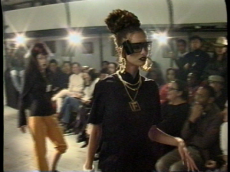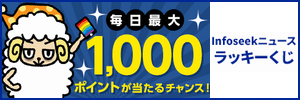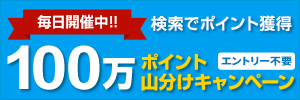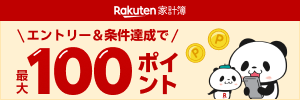I & Fashion Issue : イェッぺ・ウゲルヴィグ『Fashion Work 1993 – 2018: 25 Years of Art in Fashion』インタビュー/Interview with Jeppe Ugelvig
NeoL / 2020年11月1日 17時0分
I & Fashion Issue : イェッぺ・ウゲルヴィグ『Fashion Work 1993 – 2018: 25 Years of Art in Fashion』インタビュー/Interview with Jeppe Ugelvig
Not For Everyone t-shirt. Courtesy DIS
NYとロンドンを拠点に活動するデンマーク出身のキュレーター兼評論家イェッぺ・ウゲルヴィグの著書『Fashion Work 1993 - 2018: 25 Years of Art in Fashion』は、90年代のニューヨーク、パリ、ベルリンのアートなファッションシーンをまとめたスクラップブックだ。バーナデット・コーポレーション、スーザン・チャンチオロ、BLESS、DISの4ブランドによるジャンルを超えた実践を通して、アートとファッション界のあまり知られていない歴史を紐解いている。美学を貫くオルタナティヴなデザイナーが、いかにしてファッションシステムを繰り返し覆してきたのか。この本は、アートとファッションを行き来する若きアーティストたちのバイブルとなるに違いない。そんな彼のブックローンチ兼サイン会がベルリンのイベントスペース『Yvonne Lambert』にて開催。BLESSとのコラボレートイベントということもあり、会場となる中庭にはBLESSのアイテムがずらりと並ぶ。オープン直後の穏やかな時間、ファーハンモックに腰掛けるイェッぺに、これからのアートとファッションについて話を聞いた。(→ in English)
ーーいつからファッションに興味を持つようになりましたか?
イェッぺ「ファッションが初恋でした!若い頃はインターネットを使ったり、ファッションマガジンを読んで過ごしていましたね。10歳のときに初めてコンピューターを手に入れたんです。オンライン、my spaceやblogspotは生活の大半を占めてましたね。デンマークの小さな町出身で、ネットでファッションマガジンを買っては、熱心に読み漁っていました。そんなこともあり、14歳の時にはコペンハーゲン拠点のファッション雑誌『Cover』でインターンをして、後にアバンギャルドなファッションレーベル「MoonSpoon Saloon」で働きました」
ーー10代の頃から、すでに興味を持っていたのですね。
イェッぺ「当時はセントラル・セント・マーチンズへ行くのが夢でした。夢が叶って、18歳でロンドンに引っ越してきてからは、美術への関心が高まってきて。よりアカデミックになり、美術評論もするようになりました。デンマークの雑誌『DANSK Magazine』のエディターになったとき、ファッションというものは、時として少し表面的なものであることに気が付いたんです。アートから学んだことをファッションに取り入れたい、あるいはこの2つを組み合わせてみたいと思いました。とても知的なものと服飾に関するもの、この2つの分野の架け橋になる方法はないかと考えたのです」
ーーこの本を制作する前に展示をされていますよね。
イェッぺ「Center of Curatorial Studies of Artの学生でした。最終論文をしなければいけなくて、これらのアーカイヴを発見しました。それでバーナデット・コーポレーションとスーザン・チャンチオロを繋ぎ始めたんです。それからスーザンと仲良くなって、彼女のアーカイヴをすべてデジタル化しました。資料を全部私がハンドスキャンしましたね。ある意味、NYの歴史でもあります。彼らととても親しくなりました」

Preparing for Bernadette Corporation S/S ’96 fashion show. Photography Cris Moor

Bernadette Corporation Fall/Winter ’95 fashion show at CBGB Gallery, 1995. Courtesy of Bernadette Corporation and Greene / Naftali Gallery
ーー準備に結構時間がかかったのでは?
イェッぺ「1年くらいかな。3000ドルの予算でやったんですけど、クレイジーでした。BLESSは初対面の学生である私を信じて協力してくれたんです。彼らは展示アイテムを詰め込んだスーツケースをLAの空港までハンドキャリーで送ってくれて。それを現地の友達が空港で受け取るっていう。配送料をカバーするほど予算が無いので、人の手で運んでもらわないといけなかったんです。壁紙もですね。とても面白かったですよ。展示自体やったことがなかったので、自分が何をやっているのかまったく分かりませんでした。
おかげさまで展示は大成功。ニューヨーク州北部の小さい美術館で開催しました。小さい展示ということもあり、この歴史をもっと多くの人に見せたいと思い続けていたんです。アーティストたちは、これが印刷され、この歴史が明らかにされることに興奮し、光栄に思っていました。だから当初は、ヨーロッパでの開催も考えていたんですけど、多くのミュージアムがファッションに興味を持っていないので、実現はとても難しいことでしたね。そんなときに知り合いから『本にするのはどう?』って言われて。たしかに自分はライターであり歴史家、展覧会には出てこなかったアーカイブ資料もたくさんあります」
ーーヨーロッパといえども、まだコンサバティヴなんですね。
イェッぺ「そうですね、アート・ミュージアムとファッション・ミュージアムがあるので。ファッション・ミュージアムは、マルジェラやココ・シャネルなどのビッグネームやガーメントにこだわっていますよね。それに比べて、私がフォーカスしているのはとてもアンダーグラウンドな歴史なので」
ーーこのプロジェクトを始める前から、バーナデット・コーポレーションやスーザン・チャンチオロ、BLESSやDISは好きでしたか?
イェッぺ「歴史的にもバーナデット・コーポレーションはよく知っていますし、セントラル・セント・マーチンズ在学中は『DIS Magazine』のヨーロピアン・エディターとして働いていました。初めてファッションやアートの記事を執筆したのも『DIS Magazine』ですね。まだNYに引っ越していなかったので、そのシーンには参加していませんでした。当時、記事やレビューを執筆していたことは私にとってトレーニングでしたし、そこでライティングを学びました。『DIS Magazine』という素晴らしいプラットフォームの一部であり、ファッションとアートの両方を、同じ批判的かつ知的に扱うことができたのは素晴らしいことでしたね。当初スーザンはバーナデット・コーポレーションの一員で、スーザンが自身のブランドをローンチするときにスタイリングを手伝ってくれたのはバーナデット。そのスーザンはBLESSやDISと仲良しで。このプロジェクトをリサーチしている内に、すべてが繋がっていることに気付いたんです」

Run 7. Photography Rosalie Knox. Courtesy of Susan Cianciolo and Bridget Donahue, NYC

Run 3, Pro-Abortion Anti-Pink. Photography Cris Moor
ーー自分の道を見つけようとしているファッション学生に、本書を通じてどんなことを伝えたいですか?
イェッぺ「歴史、制作に焦点を当てることで、歴史はいつも奮闘している人たちによって作られているということを示したいです。お金も予算も何もないところから制作しているけど、それ以外の選択肢は常にある。ファッションスクールでは、ブランド名は自分の名前、年4回のコレクション、ファッションウィークでのショー、卸売りをしなければならない、といった昔ながらの典型的なアイデアを教え込みますよね。正しい、普通、マルジェラ、あるいはオールドスクールな方法で、それをしなければいけない。でもこの歴史は、ファッションには他にもたくさんの方法があることを示しています。年に2回のコレクションである必要はないですし、イメージや本、家具など何でもいいんです。これはファッションの練習でもありますし、学校では教えてくれないことだと思います。多くのファッション学生がアートをしたいと思うように、アート学生もファッションをしたいと思ってる。そしてこの本は、そのための歴史があるということを伝えようとしてるんです。すでに歴史があるから、あなたにもできる。もちろん時代は違いますが、いつだって可能性はあります。この二つのシステムを交渉する新しい方法があるんです」
ーーフォーカスした25年間の中で、ファッションとアートにおいて一番大きな出来事は何でしたか?
イェッぺ「一番大きかったのはインターネットの登場、これがすべてを変えました。グローバリゼーションとインターネットは連帯しています。サプライチェーンの輸出やインターネットの台頭、最近ではファッションが工業的になったこともありますね」
ーーパンデミックを経て、ファッションとアートに変化はあると思いますか?
イェッぺ「まだこれからですが、明らかにパンデミックが発生したときにショップは閉店し、ファッションハウスはすべて銀行口座を凍結し、広告を買わなくなりました。これは出版にとって生命線です。今のところファッション・ウィークはすべて休みで、ラグジュアリーなファッション業界というよりも、メインストリームのファッション業界に打撃を与えたと思います。今の時代、アートファッションのハイブリッドな人たちは、インスタグラムのようなソーシャルメディアで活動しているか、ギャラリーや美術館で活動しているかのどちらかです。そして、物事は一時停止されたものの、キャンセルされたわけではなく、延期されただけです。いつになったらまたパリ・ファッション・ウィークが見られるのか分からない。同時に、アート・ファッション・プロジェクトは、カレンダーに左右されませんでした。分かりませんよね。
今、金融危機があれば、新しい90年代のNYが見れるかもしれません。『DIS Magazine』はこの前の金融危機から生まれました。彼らは本物のファッション雑誌を作りたいと思っていましたが、広告の関係で資金が足りなかったんです。多くの若者がファッションブランドを立ち上げたいと思っていますが、今はそれができませんよね」
ーー上の世代を含めてみんなの意識を変えていくために、私たちができることは何でしょうか?
イェッぺ「すべて変わらなければいけません。ファッションは持続不可能、特にファストファッション。私たちが置かれている大量消費システムは、地球を破壊しているだけで、最大の汚染源の1つ。グリーンファッションのラインを作ったり、オーガニックのTシャツを作ったりするだけでは十分ではないんです。それがどうやって作られているのかというところから、システム全体を見る必要があります。自社内での職人的な独立は、その解決策の1つだと思いますが、それがすべてではありません。自社生産をしていても、素材はどこから来ているのか、誰が生地を染めているのか。バングラデシュから来ているのか、誰が綿を集めているのか知っていますか?化学薬品を散布する度にガンになる人たち。企業には何の責任もありません。身近な従業員以上の政治的責任を考えていないのです。このプロジェクトは「ファッション・ワーク」と呼ばれていますが、この本では語られていないシステムの大部分は、もう1つの「ファッション・ワーク」と呼ばれる工場や畑です。小さなジェスチャーだけではなく、トータルな革命が必要なのです。ユニクロやH&Mがサステイナブルを謳っているけど、あれはほとんどジョークですよ。問題はユニクロではなく、ファッションのシステムにあるのだから。Tシャツを買わなければならないというのは、永遠に持続不可能なこと。それは、地球が代償を払っているということを意味しているだけなのです」

N°10 Scarves Sponsored by flyers, 2000. Courtesy BLESS
[caption id="attachment_101034" align="alignnone" width="650"]

1510_bless54_01_12 001[/caption]
N°54 Remembrance Subito presentation, 2015. Courtesy BLESS
ーー近年アートとファッションの距離が近付いているように感じます。この関係性についてどう思いますか?
イェッぺ「アートとファッションはいつだって近付いたり離れたりを繰り返しているけど、90年代はとても近い存在でした。20、30年代のヨーロッパも、とても近くて、その後は離れましたね。おそらく今はインターネット、メディア、テクノロジーを通して、再び近づきつつある時代ですし、そう思いたいです。今度は何が来るのか、今からワクワクしています。もちろんこれは歴史的なプロジェクト、今は『DIS Magazine』ですら休刊しているので。私たちは、アートとファッションが非常に商業的で退屈な方法で混ざっている、新しい方法を見ていると思います。大きなラグジュアリーハウスがアートプロジェクトを行っていますが、インディペンデントな批評家たちもファッションにも興味を持っている。アメリカやアジアでも何か面白いことが起こっています。
2000年代初頭、ファッションは非常にニッチで小さな産業から世界的なマス・エンターテイメントへと変化しました。アメリカのトップモデルやプロジェクト・ランウェイの時代ですね。ファッションがマス・カルチャーの一形態となり、アートから離れていく時代です」
ーーもうすでに次のプロジェクトを進めているとか。
イェッぺ「今、東南アジアのファッションプロダクションに焦点を当てたプロジェクトを進めています。来年北京でやるプロジェクトです。中国南部のファッションプロダクションに焦点を当てています。日本や韓国にはファッション産業がありますが、タイ、インドネシア、マレーシア、香港、フィリピン、ベトナムといった南シナ海周辺の国々に注目しているんです」

Hoop Dreams. Courtesy DIS
text Yukiko Yamane
Jeppe Ugelvig
Jeppe Ugelvig is a critic and curator based in New York and London. He writes, curates, and publishes across art, fashion and its various intersections. A graduate of Central Saint Martins and the Center for Curatorial Studies, Bard College, his writing appears regularly in Frieze, i-D, ArtReview, AnOther, Flash Art International, PIN-UP, Spike, and LEAP, amongst many others. He has staged exhibitions and projects in London, Berlin, Copenhagen, New York, Turin, and Ramallah. The book is designed by Laura Coombs, currently Senior Designer at the New Museum of Contemporary Art and a Lecturer at Princeton.
https://jeppeugelvig.com/bio

Not For Everyone t-shirt. Courtesy DIS
-When did you first become interested in fashion?
Jeppe Ugelvig : Fashion was my first love! When I was young, I spent most of my time on the internet and reading magazines. I got my first computer when I was ten years old. The combination of being online and myspace, Blogspot was a huge part of my life. Coming from a small town in Denmark. I would buy fashion magazines online and read them religiously. Which then lead me to start interning in Copenhagen when I was fourteen. I was interning at a Danish Fashion magazine called “Cover” and would later work for the avant-garde fashion label MoonSpoon Saloon.
-As a teenager, you were already interested in this field?
Jeppe Ugelvig : It was my biggest dream to go to Central Saint Martins.When I moved to London at the age of eighteen, my interest in art developed more. I became more academic and did some art criticism.
When I became editor of a Danish magazine, DANSK Magazine, I realised that fashion discourses and is a bit superficial sometimes. I wanted to bring the things I had learned from art to fashion. Or combine these two things. One being very intellectual, one being more about clothing and seeing if there was a way to bridge these two disciplines.
-Before you published this book, Fashion Work, you had an exhibition.
Jeppe Ugelvig : I was a student at the Center of Curatorial Studies of Art. We had to do a final thesis and discovered these archives. I started connecting Bernadette and Susan. I became very close to Susan and started opening up her archives. I digitalised everything. All the images are hand-scanned by me. In a way, it is New York history as well. I became very close to them.

Preparing for Bernadette Corporation S/S ’96 fashion show. Photography Cris Moor

Bernadette Corporation Fall/Winter ’95 fashion show at CBGB Gallery, 1995. Courtesy of Bernadette Corporation and Greene / Naftali Gallery
-How long did it take to prepare for this exhibition?
Jeppe Ugelvig : It took a year. I did it on a shoe-string budget of 3000 dollars. It was crazy. BLESS didn’t know me, but they trusted me even as a student. They put everything in a suitcase, and they flew it to Los Angeles and left it there and a friend of mine had to bring it. We didn’t have money to do the shipping so we had to get people to bring them around. We had to hand-carry everything, even the wallpaper. It was hilarious. I have never done an exhibition before so I had no idea what I was doing.
We did the show and it was really good. It was in a small museum in upstate New York. Not so many people saw it and I kept thinking I wanted to show this history to more people. The artists were excited and honoured to have this in print and this history to be revealed. So at first, I wanted to make it into an exhibition in Europe, to restage it. But it was quite hard because a lot of museums are not interested in fashion. Someone suggested making it into a book. I am also a writer, a historian and there are so many archival materials that never made it to the exhibition.
I am amazed that museums and galleries are still very conservative.
Yes, because you have art museums and fashion museums. Fashion museums are so focused on the garment and the big names of fashion like Margiela, Coco Chanel. This is a very underground history.
-Before you started this project, you already loved this project Bernadette Corporation, Susan, BLESS, DIS?
Jeppe Ugelvig : I was more familiar with Bernadette Corporation, historically, and I used to work for DIS Magazine. I was their European editor when I was studying at Central Saint Martins. My first fashion and art writing had been done in this magazine. So I was part of it. I wasn’t part of the New York scene, because I haven’t moved yet. I was eighteen-years-old living in London writing articles, writing reviews and that was my training ground. It was where I learned how to write. Being a part of that amazing platform and both being able to do fashion and art stuff with the same critical and intellectual focus was nice. Bernadette Corporation, one of its numbers was Susan, in the very beginning. And Susan Cianciolo, when she launched her brand she got help from Bernadette to style it and Susan is really good friends with DIS and BLESS. While researching this project, I realised everything is connected.

Run 7. Photography Rosalie Knox. Courtesy of Susan Cianciolo and Bridget Donahue, NYC

Run 3, Pro-Abortion Anti-Pink. Photography Cris Moor
-What do you hope to communicate to the fashion students?
Jeppe Ugelvig : By focusing on history, focusing on production, I want to show how history is always made by people who are struggling. Making things out of nowhere, no money, no budget but how there is always an alternative. When you go to fashion school there is this idea they put in your head that you have to make an independent fashion brand with your name and you have to do collections four times a year, you have to do fashion week, fashion shows, you have to do wholesale. You have to do it the right way, normal way, the Margiela way, or the old school way. But this history shows that there are many other ways to do fashion. It doesn’t always have to be a collection of clothing twice a year, it can be images, publishing it can be furniture, it can be whatever this is. This is also a way of having a fashion practice. I think this is something not taught in school. There are a lot of art students who want to do fashion stuff, and fashion students who want to do art stuff. And this book is trying to say that there is history for this. This has been done before so you can do it as well. Of course, it is a different time now, but there are always new possibilities. There are new ways to negotiate these two systems.
-Between 1993 and to 2018, what was the biggest influence on art and fashion?
Jeppe Ugelvig : The internet. This changed everything. Globalisation and the internet go hand in hand. The export of the supply chain, also the rise of the internet. Also, the fact that fashion became industrial recently.
-With the current pandemic, are there any changes in art and fashion?
Jeppe Ugelvig : It’s too soon to say but obviously when the pandemic hit, clothing shops closed, fashion houses all froze their bank account and stopped buying advertising. This is the lifeline of publishing.
Fashion weeks are all off at the moment. and I think it's more of a blow to the mainstream fashion industry than the luxury fashion industry. In this day and age, art fashion hybrid people either operate on social media, like Instagram, or in galleries and museums. And although things were paused, they were not cancelled. They’ve been just postponed. I don’t know when we’ll see a full flash of Paris fashion week again. At the same time, art fashion projects never had a place by the calendar. We don’t know.
If there is a financial crisis now, we might see a new 1990s, New York.
The DIS Magazine came about from the last financial crisis. They wanted to start a real fashion magazine, a physical one, but there was not enough funding for it because of advertising so who knows. A lot of young people want to start fashion brands, and it's just not possible right now.
-What can be done to change the attitude about sustainability, including the older generation?
Jeppe Ugelvig : Everything has to change. Fashion is unsustainable, especially fast fashion. The mass consumer system we are in is just destroying the planet, it's one of the biggest polluters. I think it's just not enough to do a green fashion line or to do one organic t-shirt. You need to see the full system, starting with how things are made. I think artisanal independence in house is one part of that solution but it's not everything. Even if you do in house production, where is the material coming from, who is dying your fabrics. Is it coming from Bangladesh, do you know who is collecting the cotton? The people getting cancer every time they have to spray chemicals. Companies have no responsibility. They don’t think about their political responsibility beyond their nearest employees. This project is called “ Fashion work”, but a big part of this system that I don’t talk about in the book is the other ‘Fashion Work’ the factories and the fields. We need a total revolution, not just small little gestures. When places like Uniqlo and h&m do like sustainable initiatives, it is almost like a joke. Because the problem is not Uniqlo, the problem is in the system of fashion. It’s forever going to be unsustainable to have to buy t-shirts. It just means that the earth is paying the price.

N°10 Scarves Sponsored by flyers, 2000. Courtesy BLESS
[caption id="attachment_101034" align="alignnone" width="650"]

1510_bless54_01_12 001[/caption]
N°54 Remembrance Subito presentation, 2015. Courtesy BLESS
-The distance between art and fashion is becoming closer more than before. What do you think about the relationship?
Jeppe Ugelvig : It moved closer together and further away from each other over time. The 90s was the period where it was close. The 20s, 30s Europe they were very close as well and then they lived far away from each other. Perhaps we are in a time when they are moving closer together again, in this space of the internet, media, technology. So I would like to say and think that. I am excited to see what's going to come again. Because of course, this is a historical project, even DIS Magazine is closed now. I think we see new ways art and fashion are merging both in very commercial and boring ways. Big luxury houses, doing art projects. but also small independent critical practices taking interest in fashion. Something interesting is going on here, the US and also Asia.
In early 2000s fashion goes from being a very niche small industry to be a global mass form of entertainment. This is the time of America’s Top Model and Project Runway. Its the time where fashion becomes a form of mass culture and that means it moves away from art.
-You have started your next project already?
Jeppe Ugelvig : I’m beginning a project now that focuses on fashion production in south-east Asia. That's the project I’m doing next year in Beijing. It's focusing on fashion production in the south Chinese scene. Japan and Korea have a fashion industry, whereas I’m focusing more on countries around the South China Sea: Thailand, Indonesia, Malaysia, Hong Kong, Philippines, Vietnam.

Hoop Dreams. Courtesy DIS
text Yukiko Yamane
Jeppe Ugelvig
Jeppe Ugelvig is a critic and curator based in New York and London. He writes, curates, and publishes across art, fashion and its various intersections. A graduate of Central Saint Martins and the Center for Curatorial Studies, Bard College, his writing appears regularly in Frieze, i-D, ArtReview, AnOther, Flash Art International, PIN-UP, Spike, and LEAP, amongst many others. He has staged exhibitions and projects in London, Berlin, Copenhagen, New York, Turin, and Ramallah. The book is designed by Laura Coombs, currently Senior Designer at the New Museum of Contemporary Art and a Lecturer at Princeton.
https://jeppeugelvig.com/bio
関連記事のまとめはこちら
https://www.neol.jp/fashion/
外部リンク
- 「新しいことを試す恐怖と“白人のようなことをしているのではないか”ということで、自分のアイデンティティを拒絶し、ゴスへの関心を恥じていました。けれど、それが自分のルーツと調和できる豊かなコミュニティであり、生き方だと気づき解放されました」I & Fashion Issue : Interview with Krissie
- I & Fashion Issue : イェッぺ・ウゲルヴィグ『Fashion Work 1993 – 2018: 25 Years of Art in Fashion』インタビュー/Interview with Jeppe Ugelvig
- 真の美しさは、身体や外見ではなく、自身の内なる場所に宿る。 ビヨンセとのコラボレート、待望のセカンドコレクション「adidas x IVY PARK」
- MONCLER + RICK OWENS パートナーのミシェル・ラミーが多層的なディスカッションとパフォーマンスを開催
- 日常のテックアイテムがラグジュアリーなツールへ。FENDI X CHAOSアクセサリー カプセル コレクションを発表
この記事に関連するニュース
-
英語で「それは大変だったね」はなんて言う?
OTONA SALONE / 2025年1月9日 7時0分
-
Ringo Magazine Launches First Issue with an Exclusive NYC Celebration
PR TIMES / 2024年12月25日 14時45分
-
tHE GALLERY HARAJUKUにて、2025年1月2日(木)より、THEKLA KAISCHAURI個展「FRACTURED」を開催。
PR TIMES / 2024年12月25日 14時45分
-
UESHIMA MUSEUM ANNEX オープンのお知らせ ~ 2025年1月15日より、今津景展を開催
PR TIMES / 2024年12月23日 15時15分
-
Shareholder Proposals to Japan Business Systems, Inc.
PR TIMES / 2024年12月22日 14時40分
ランキング
-
1天正遣欧使節・千々石ミゲルの墓、長崎県諫早市の文化財に…ミカン畑での墓石発見から20年
読売新聞 / 2025年1月15日 17時0分
-
2芥川・直木賞に選ばれた3作家 どんな人物?
毎日新聞 / 2025年1月15日 20時3分
-
3芸能人なぜ呼び捨て?「日本語呼び方ルール」の謎 日鉄会長の「バイデン呼び」は実際に失礼なのか
東洋経済オンライン / 2025年1月15日 9時20分
-
4高齢者は「体重」が重要…標準を下回ると死亡リスクが急上昇
日刊ゲンダイDIGITAL / 2025年1月15日 9時26分
-
5スニーカーのインソールを変えるだけで「靴の機能は劇的にアップ」する。“初心者が買うべき”一足とは
日刊SPA! / 2025年1月15日 15時51分
記事ミッション中・・・
記事にリアクションする
![]()
記事ミッション中・・・
記事にリアクションする

エラーが発生しました
ページを再読み込みして
ください










